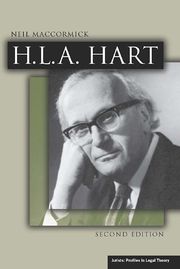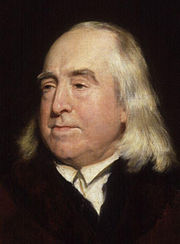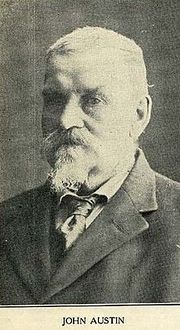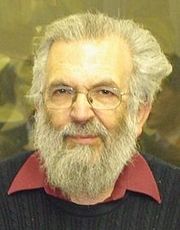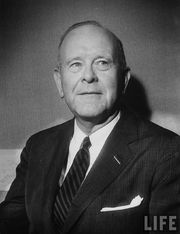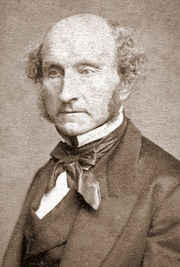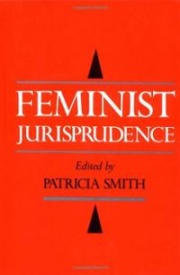TRU/Law3020/GroupQ
Starson v Swayze, 2003, SCC
Group Q: Students: Cara Ryan, Sangin Safi, Ari Schacter, Amandeep Sidhu
Contents
- 1 Fact Summary
- 2 Where is Starson now?
- 3 Traditional Natural Law Theory: Law for the Common Good
- 4 The Positivist Response: Law as Command (Austin)
- 5 The Separation Thesis (Hart)
- 6 The Morality of Law (Fuller)
- 7 Law as a System of Rights (Dworkin)
- 8 Liberty (Mill) and Paternalism (Dworkin)
- 9 Law and Economics: Law as Efficiency
- 10 Feminist Jurisprudence: Law as Patriarchal Institution
- 11 Critical Legal Studies and Critical Race Theory
Fact Summary
Starson v Swayze, [2003] 1 S.C.R. 722, 2003 SCC 32
This case concerns the right of a person to refuse recommended medical treatment. In this case, Starson had bipolar disorder and refused his medical treatment when he failed the test for capacity under s.4(1) of the Health Care Consent Act (HCCA).
Starson was an exceptionally bright man who lacked formal training but worked as a physicist. Since 1985, he had been frequently admitted to mental health facilities, the most recent was where he was found not criminally responsible for making death threats and the Ontario Review Board ordered his detention for 12 months.
Starson refused to consent to proposed treatment stating that it would slow his thinking to normal levels. According to the HCCA, there is a presumption of capacity that can only be displaced by evidence that the person lacks elements of capacity on a balance of probabilities outlined in the Act. Under s.4(1), capacity has two elements:
- 1) Person must be able to understand the information that is relevant to making decision about the treatment; and
- 2) Person must be able to appreciate the reasonable foreseeable consequences of a decision or lack of decision
After applying this test to Starson, the Board found that he did not have the capacity to make the decision to refuse treatment. The Board’s decision turned on two findings: Starson was in denial about having a mental disorder and he failed to appreciate the consequences of his decision.
Starson then applied to the Ontario Consent and Capacity Board for a review of the finding of incapacity, but they confirmed the initial finding stating that Starson failed to appreciate the risks.
The SCC was split in a 6 to 3 decision, the majority in favor of granting Starson the capacity to refuse medical treatment. The court stated that imposing treatment against his will was offensive to his dignity and autonomy and was to be avoided unless he lacked capacity to make his own decision according to the test of capacity under s.4(1). The majority found the Review Board’s decision was unreasonable because there was inadequate evidence to support the finding that Starson did not have capacity to make his own decisions or appreciate the benefits and risks of the decision. Further, the SCC found that the Board had misapplied the test for capacity, focusing too much on the best interests of the patient. The dissent held that the Board had properly applied the test and that although the Board had showed sympathy for Starson’s situation this did not mean that the Board focused too heavily on his best interests rather than capacity.
The evidence showed that Starson was able to appreciate the intended effects of medication. Starson understood the reasonably foreseeable consequences of his refusal of treatment. Even though Starson didn’t think he had an illness he was aware that his brain didn’t function in a normal way. The court said it was sufficient to understand and recognize the manifestations of his condition without understanding that he had a condition constituting an illness to pass the capacity elements. Therefore, Starson had capacity and was able to make the decision to refuse the proposed treatment.
Where is Starson now?
Professor Starson is now taking anti-psychotic drugs, but the grandiose delusions remain. This was a requirement of his conditional discharge, where he was found not criminally responsible for death threats. If you listen to the delusions of Professor Starson, he is 17 billion years old, immortal, engaged to Joan Rivers, and about to publish groundbreaking physics research. Alas, the only thing that may be true is the publication of the groundbreaking physics research. Professor Starson isn't a real professor either, but he legally changed his name from Scott Schutzman to Professor Starson.
Through all of this, Professor Starson still denies that he is mentally ill. He asserts that the shrink profession is essentially one of opinion and opinion alone. It holds no connection to science.
For more information about Professor Starson, please see: Professor Starson’s landmark case established legal right to refuse medication, but he’s still fighting his own battle
Traditional Natural Law Theory: Law for the Common Good
Natural Law Theory
According to Thomas Aquinas, there are four elements of a valid law:
1. Must be directed to the common good
2. Must follow practical reason (reasonable steps leading to the common good)
3. Must be made by valid lawmaker (ruler within community, who hold this position by reason of the natural order)
4. Must be promulgated
Furthermore, laws are teleological (law's end or function is the rational pursuit of the common good). Therefore, any law that does not have this function is no law at all.
Application to Starson v Swayze
Can the court’s reasoning (including any dissenting opinion) be understood as incorporating any features of the Natural Law Theory?
In the decision of the majority they placed an emphasis on individual autonomy by preserving the choice of Starson to determine whether he would accept the medical treatment. Aquinas may view the retention of individual autonomy as a common good and beneficial for the entire community. It is arguable that Aquinas would believe that individuals may only take full advantage of their intellectual capacity if they are capable of being autonomous. Aquinas, as an essentialist, believes that the ability to exercise spiritual and pursue intellectual endeavours is fundamental to all humans. Furthermore, Aquinas’s appeal to practical reasoning would assert that the law (HCCA) and its associated test to determine whether a person should maintain autonomy in medical choices is valid law. The law and test is easily understood, concise and provides practical direction how one ought to act in order to reach a decision on whether an individual maintaining their autonomy is directed for the common good. The whole purpose of the HCCA is aimed to ensure that individuals incapable of making decisions are given the assistance necessary to reach a decision that is mutually beneficial for themselves and society.
The decision of the dissent could also be said to be completely aligned with the view of Aquinas, albeit for different reasons. It is arguable that forcing medical treatment upon Starson could also be for the better interests of society and therefore directed toward advancing the common good. This contention is supported by the fact that Starson made death threats to other individuals and may have been inherently dangerous to other members of society. Ultimately, if he is dangerous, it would be a decision for the common good to place a limitation on his autonomy and force medical treatment.
How would Aquinas approach the issues considered in the case?
If Aquinas were to approach the main legal issue in this case, which is whether Starson has the capacity to consent and opt out of medical treatment, he would primarily consider what is better for the common good in making his decision. Firstly, Aquinas would determine whether the HCCA is a valid piece of legislation. In this assessment, he would consider: (1) whether it is directed toward the common good, that being a law beneficial to the community; (2) whether it follows reasonable steps in reaching that common good and is easily understood by all those who would follow the law; (3) whether it is made by a valid lawmaker; (4) and lastly, whether or not it is promulgated. It appears that this law would be valid according to the test set forth by Aquinas.
Aquinas would then proceed to consider whether Starson’s work as a physicist is more beneficial to the common good than allowing him to avoid treatment and potentially causing harm to others. If there is believed to be a reasonable apprehension of harm that may result to others, Aquinas would believe that it is contrary to the common good and unable to be overcome by Starson’s contributions to society as a physicist.
Would Aquinas's approach yield a different outcome than the one reached by the court in that case?
As mentioned above, it is sensible to believe that Aquinas would reach the same decision that the dissent arrived at in forcing Starson to comply with the treatment. In light of the fact that Starson uttered those death threats, Aquinas would hold it reasonable to impose medication upon Starson in pursuit of the common good. As mentioned by the dissent, this conclusion is within the range of conclusions that the board was capable of forming from the evidence and is not unreasonable.
The Positivist Response: Law as Command (Austin)
Positivism
According to Austin and his separation thesis, laws exist separately from their moral merit or demerit. There are legal systems that are unjust and immoral yet are still valid such as Nazi Germany. Austin would state that laws guide behavior of citizens, but there is no requirement that the law must seek a common good or have morally worthy ends. Austin defines a law in terms of commands issued by a sovereign superior and backed by the threat of sanction.
Austin purports that there are three directives that govern human behavior: 1) The tenants of ‘positive law’ are that laws are made by political superiors and issued to subordinates within that community. They are commands, backed by the threat of sanction, which imposes a duty of compliance upon citizens. 2) Laws of ‘positive morality’ are more rules that govern conduct in clubs and organizations, such as international and constitutional law. These are any rules that govern human conduct but lack one or more of the essential conditions of law. 3) Laws set by God for human beings, otherwise known as the natural law of law of nature. These are not laws in the technical sense because they lack one or more of the essential elements of a law as defined by Austin. However, they govern human conduct nonetheless. Natural laws are not independent of morality.
There are three categories of non-imperative laws according to Austin: 1) Declaratory laws: These explain and import existing positive law; they are the acts of legislatures to explain positive law. They simply declare what duties are underneath the law. 2) Laws abrogating or repealing existing positive law: These are not commands, but revocations of commands, and therefore can be termed permissions. 3) Imperfect laws: These lack a sanction and are not binding. However, they declare certain acts as crimes, but assign no punishment to the commission of the act. Raz asserts that a law claims authority even if it is unreasonable, as it states what its subjects must do. The law does not invite dialogue about whether the reasons underlying the laws are or good or sensible. Raz theorized the “service conception” of authority. This states that a claim of authority is morally justified when the authority actually performs a service for its subjects to the benefit of those subjects. The law is enacted to help its subjects, putting them in a better position than if the law did not exist.Jeremy Bentham’s approach to legal positivism hinges on the concept of utilitarianism and the idea that the overall happiness of those impacted by a law affects how that law is evaluated and how it may be challenged. Happiness is accepted by Bentham to be the avoidance of pain and the promotion of pleasure. A valid law is then a law that maximizes the overall happiness for the greatest amount of people. Invalid laws are therefore available to be challenged. This diverges from the concepts of Natural Law, which implies that morality and law converge and laws flow out of this merger. This union of morality and the law makes the validity of law difficult to dispute.
Hart’s approach to legal positivism under his rule of recognition thesis is that enforcement officials must wholly accept and enforce a law in order for it to be valid. The rule of recognition has three main criteria. The officials must; recognize the law, apply the law and believe that there is an obligation to apply the law. Hart further breaks the law down into both primary and secondary laws. Primary laws are substance based laws that define what can and cannot be done in society. Secondary laws are process based and provide for a framework for changing the law. Though there is a prima facie duty to obey the law, Hart’s secondary laws provide a means to change unfair or pointless laws – laws that have become a mere shell.
Application to Starson v Swayze
Can the court’s reasoning (majority and dissent) be understood an incorporating any features of Hart, Bentham, Austin or Raz?
Based on the propositions put forward by Austin, the SCC did take a legal positivist approach. The court considered whether the provision and the test for ascertaining eligibility for consent were valid and then looked to whether or not they should consider the patient’s best interests. The dissent agreed with this approach and said that Starson’s self-interests were not relevant in applying the test from s.4(1). Ultimately, they both separated morality from the law.
The SCC also took the legal positivist approach that was commented on by Raz. They looked to whether or not the law was justified in the sense that it was for the betterment of those whom are subject to it. The provision provides the service to the community of attempting to provide treatment to those who are mentally sick. The test laid out under section 4(1) of the HCCA provides a way for the patients to get treatment, even if they may be opposed to it. However, this is only as a result if the test deems the person not to have the capacity to make his or her own decision in refusing treatment. The court’s reasoning in the majority decision would reflect Bentham’s interpretation of the law as a legal positivist. The reasoning was limited to a literal interpretation of the law with limited interference from moral judicial interpretations. It was not for the courts to assess the patient’s best interests or the efficacy of the medical treatment, it was to apply the law as written by the legislature. Bentham would have however explored the validity of the law more deeply by assessing the social protection and self-interest aspects in applying the framework. If the law provides more disutility than utility, he may recommend that the legislature reconsider the law. The capacity to consent framework applied by the courts would be classified as a primary rule under Hart’s analysis and part of the systems regulation of behaviour. The courts, in defining the parameters of Starson’s right to consent, applied a standard recognized by officials in the legal system. Hart would agree that this brings validity to the law, and should oblige the bulk of the population to accept the law.
How would Hart, Bentham, Austin and Raz approach the issues considered in the case?
Austin would support s. 4(1) of the Health Care Consent Act (HCCA). The question that must be assessed is whether withdrawing an individual’s autonomy can be perceived as a penalty. In a 6 to 3 decision, the majority in Swayze held that Starson was in fact capable of having the right to refuse medication. The majority held that the consent board misapplied the test from s. 4(1) of HCCA. There was too much time considering his best interests, instead of taking a more objective approach as to whether Starson was capable under the provision. Strictly applying Austin’s definition of a law, s. 4(1) of HCCA would require a command, the threat of sanction, and the command would have to be made by a sovereign superior.
This is a command issued by the provincial legislation and directed by political superiors. In order to be considered capable under s. 4(1) of the HCCA, an individual must be capable of understanding the consequences of a decision as to whether or not to take medication, and understand all information that is pertinent to the decision. It is arguable that Austin may not consider the imposition of treatment as a sanction, as it is not a ‘punishment’ in the strict sense of the word. If it could be construed that taking away the ability of an individual to consent to treatment is a sanction, then Austin may consider this a law. However, this provision appears to be a non-imperative law, namely an imperfect law because it lacks a sanction. Raz believes that a law is justified if it a service for the community and if the community was able to benefit from the law. In this case, the test in s. 4(1) would be run through and it would likely be found that Starson should be given the right to refuse treatment. This law benefits the people that it applies to because it provides an assessment whether professionals should intervene and insist on forcing an individual to undergo treatment. This law empowers the patients to make their own decisions, and provides a safeguard for when people may be unable to make the correct decision as to whether they should undergo treatment.
Swiftly dismissed as not applicable, courts addressed a third value that would limit a person’s capacity to consent to medical treatment: societal protection. This “comes into play in some cases of mental illness where the mentally ill person poses a threat of injury to other people or to him-- or herself, it may be justified to impose hospitalization on the basis that this is necessary in the interests of public safety”. Bentham would likely explore the concept of public safety further and accept it as a viable factor in the decision of the court, arguing that the overall happiness of the community may be a greater consideration than that of Starson’s personal autonomy. If Starson is found to have capacity to consent to treatment, society may negatively be impacted due to his history of making death threats. Bentham would argue that Starson’s personal autonomy is validly undermined if the outcome of treatment has a greater good for society.
Hart would approach the issue in Starson v Swayze questioning why there are multiple interpretations of the law. The capacity to consent framework as legislated is applied differently by the three enforcement bodies presented in the case. The inconsistent application of the law by officials would suppose that the law is at risk of becoming a “mere shell” according to Hart’s rule of recognition. If the application of the capacity to consent framework is not wholly recognized by the officials in the system, then Hart may argue that the law has lost validity.
Do you think the approach of Hart, Bentham, Austin and Raz would yield a different outcome than the one reached by the court in that case?
Austin would agree with the majority decision since they attempted to separate morality from law. The court did not consider what society would deem good and bad behavior. Austin’s approach would likely yield the same outcome as the majority in this case. He would follow the command set forward in the test and determine if Starson has capacity. If Starson sufficiently met the test for capacity, he would have the right to reject the treatment. Morality would play no role in the decision-making process.
The approach put forward by Raz would also yield the same outcome as above. The court would assess whether the test for consent would serve a purpose in society and place people in a better position than they would have been in had the law not been followed. In this case, the majority deemed that the test should be followed, but the consent board misapplied it. Bentham would have likely agreed with the dissenting decision and removed Starson’s capacity to consent. His justification would have been based on public safety and greater overall happiness for society. The application of the law may not have diverged from the reasoning presented by the majority; however, Bentham would not have dismissed a third category of societal protection. Bentham’s analysis of social protection would have included a discussion of the impacts of infringing on Starson’s personal autonomy, especially bodily integrity. Forcing Starson to take medication would be a severe infringement on Starson’s bodily integrity. This would be balanced with the need for social protection (greatest good) and his decision would possibly have been swayed on this point. If the capacity to consent framework was found to have lost its validity due to the inconsistent application of officials, it may be that the decision of Hart would yield a different outcome. If the law is not valid, then Hart would view there is no duty or obligation to apply the law. Hart may elect to make a decision on other grounds, arguing that the piece of legislation does not fit the circumstances of the situation.
The Separation Thesis (Hart)
The Separation Thesis
According to the Separation Thesis, law and morality are separate systems with two sets of rules and standards. They frequently run parallel but in fact they are not the same thing since this thesis holds that law is not teleologically moral as the Naturalists would maintain. We may evaluate legal rules with reference to moral rule. If there is a clash between law and morality, as individuals we must decide whether the obligation to follow the moral rule is greater. We must weigh the competing obligations in each case. According to this theory, law is not morality, but law does not supplant morality.
According to HLA Hart, laws have “ought claims” - that we ought to follow - in the way that other morally neutral rules do. This is similar to the rules of chess or etiquette. Legal rules grant right and duties and are not individually chosen but are rooted in the rule of recognition. In order for a legal rule to be stable and effective, the rules must be obeyed by at least some individuals for reasons other than fear of punishment. These reasons may include that the rules are perceived as good out of habit or that they serve long-term self-interest.
Legal rules - legislation and common law rules - are expressed in general terms, so as to apply generally. Legal rules will have a settled core of meaning, however, factual situations presented in cases may fall outside of that settled meaning in the "penumbra". Cases that fall in the penumbra are terms “hard cases” and it is up to the judges to discern which cases fall into this category. This is determined by rule-governed practices that must be understood by the rule-governed practice that gave rise to them. According to Hart, judges draw on and apply these terms that are well-known on account of being within a rule-governed practice when exercising discretion for hard cases. Therefore, there are a consistent set of principles underlying decisions in the penumbra and the decisions are not driven by notions of personal morality.
Application to Starson v Swayze
Can the court’s reasoning (including any dissenting opinion) be understood as incorporating any features of the Separation Thesis?
Both the majority and the dissent would agree that whether Starson had the capacity to make a decision in regards to his treatment, pursuant to section 4(1) HCCA, is a hard case. A "penumbra" of uncertainty surrounds the settled core meaning of what can be properly inferred from the usage of the word "capable" under s. 4(1) as it is inherently broad. Being incapable under this test does not solely mean that a person has an inability to understand, but extends to a lack of ability to appreciate or judge the consequences of making a decision. Further, an even greater deal of uncertainty lies in the conclusion that can be drawn as to whether Starson had the ability to appreciate or judge the consequences that would arise from his treatment choice. In her dissent, McLachlin argued that there is a range of conclusions that could be made as to whether Starson lacked capacity. The fact that the majority and dissent differed on whether Starson could make a decision in regards to his treatment is evidence of the underlying uncertainty of these hard cases.
As well, both the majority and dissent can be said to have appreciated and taken into consideration the "terms of the rule-governed practice", as they mentioned the importance of autonomy and dignity in Canadian society. These two ideas lie at the heart of our legal system and are considered fundamental to its operation. These values were drawn upon in this case in deciding whether Starson should be allowed to refuse medical treatment. Both the majority and dissent argued it is justifiable to override an individual's decision if mental illness has interfered with his mind in such a way as to either: (a) create an inability to understand the information necessary in making a relevant treatment decision; or (b) make an individual incapable of understanding the foreseeable consequences of his treatment choice. The point of divergence in the court was that the majority felt that Starson had the ability to appreciate both of these factors, whereas the dissent felt that his "almost total" denial of illness properly led to the conclusion that he could not.
How would Hart approach the issues considered in the case?
Hart would affirm that this is indeed a "hard case", where the "terms of the rule-governed practice" must be drawn upon to make a proper decision. Throughout the fabric of Canadian society, autonomy and dignity are emphasized as fundamental to our legal system. There is a great deal of ambiguity as to whether Starson could be said to have the capacity to make a decision in regards to his treatment. The supporting evidence, such as his almost total denial of the illness could be construed to illustrate a lack of an ability to appreciate the consequences. However, this could also be said to evidence a bare minimum acceptable understanding of the consequences that would arise from his treatment decision.
Hart may further examine whether there are any reasons to place limits upon an individual's autonomy, although it is stressed that these reasons would have to be compelling. It was noted that Starson had made death threats to individuals, and his attending doctor indicated a belief that this may be a result of his mental illness. A small or innocent degree of provocation, resulting in Starson making death threats was believed by the doctor to be a progression of the illness. Further, the doctor indicated that it is his belief that this would have never occurred fifteen years prior. If Starson's illness continued to progress, it seems plausible that these death threats could turn into action. Therefore, it appears Hart would align with the dissent, in arguing that Starson was incapable of making a proper medical treatment.
Do you think Hart's approach would yield a different outcome than the one reached by the court in that case?
It is likely that Hart will reach the same decision as the majority. As discussed above, it is likely that a court will find this case to be one that falls in the "penumbra". Therefore, Hart would argue that a judge must decide this case in accordance with the "terms of the ruled-governed practice". In the current Canadian context, Hart would agree that the Charter of Rights and Freedom would qualify as those "terms". Since, individual autonomy is one of the values entrenched into the Charter, Hart would agree that this case should be decided in a manner that would uphold Charter values. Therefore, Hart would agree that the majority's decision is one that is consistent with the "terms of the ruled-governed practice".
The Morality of Law (Fuller)
The Morality of LawFuller developed the Morality of Law thesis as a reaction to the Separation Thesis purported by Hart. As the Separation Thesis divorced morality from law, Fuller argues that they are intrinsically linked, that law has grounding in and must appeal to a moral standard to be accepted by society. Without this external morality, society loses its connection and feelings of obligation to the law. According to Fuller the purpose of law is to produce “good order” and there are requirements that the legislature must follow in the development of good (effective) law, this he considers the inner morality of law. He states that a law may fail if: (1) there is a lack in the achievement of rules resulting in ad hoc decisions; (2) there is a failure to publicize the law; (3) there is an over use of retroactive legislation; (4) law is not clear; (5) law is contradictory; (6) law requires more from followers as is possible; (7) law changes in an inconsistent and frequent manner limiting the ability to follow the law; and, (8) laws diverge in application from intention. In the application of law Fuller states that judges should apply the law purposefully. The most difficult of cases are those with uncertain and competing purposes and Fuller says judges must decide these cases based on purposeful interpretations that serve both internal and external morality.
Application to Starson v Swayze
Can the court’s reasoning (including any dissenting opinion) be understood as incorporating any features of the Morality of Law thesis?
The purpose of the HCCA is to facilitate treatment for those lacking an ability to consent and to outline a consistent framework related to consent in treatment. Underlying this purpose is a fundamental intention to enhance the autonomy of person for whom treatment is proposed. The Act presumes that a person has the ability to consent and that consent can only be rebutted with certain evidence, namely the ability to understand the relevant information required to make a decision and the ability to appreciate the reasonably foreseeable consequences of a decision. Both the dissent and the majority approached the application of the capacity to consent framework outlined in the Act from a purposive perspective, serving both internal and external morality. They applied the framework adhering to the value of personal autonomy and presumption of capacity. The right to refuse medical treatment as fundamental to a person’s dignity and autonomy is an example of Fuller’s external morality. Freedom of choice and control over one’s body is a tenet of society and appeals to a moral standard independent of the law itself. As per the inner morality of the capacity to consent framework, it appeals to all the eight factors described above and would be considered good and effective law under Fullers analysis. The dissent and the majority both agreed that the way by which the board had decided incapacity originally was not based on a purposive analysis of the legislation and the fundamental principles inherent in a determination of autonomy.
How would Fuller approach the issues considered in the case?
Fuller would first determine if the law was grounded in morality by asking if the law was morally good and valuable. He would likely decide that the law does have grounding in morality and adheres to societal expectations and expressions of fundamental values independent of the law. The values the framework is seeking to protect are autonomy in the context of a still interdependent and cohesive culture and society. Fuller would consider the realization of this external morality of balancing the societal desire to maintain free choice coupled with the realization that full exclusive autonomy is not the ideal in the legislation as producing good order. It appeals to values in society that serve good moral ends and would support feelings of obedience and fidelity to the law.
Fuller would then assess whether the capacity to consent framework addressed inner morality. This is not a higher law as Natural Law theorists describe it, it is an inherent morality derived from within. The question is whether the law’s purpose is to produce good. Fuller would assess the law using the above mentioned eight characteristics of failures of law and likely decide that it is in line with inner morality; however, a question that would arise in this analysis is surrounding the clarity of the law. As the majority, dissent and Board decided differently on the issue of Starson’s capacity supports a claim that the law is not clear and therefore fails an aspect of inner morality. Fuller may look at this and decide that the lack of clarity is representative of an arbitrary law not in line with the inherent morality that makes it act like law. Taking both the external and internal morality into account Fuller would address the application of the framework from a purposive approach as the court did.
Do you think Fuller’s approach would yield a different outcome than the one reached by the court in that case?
Fuller would likely come to a similar decision as the majority did in finding Starson to have capacity. The starting presumption of the legislation is that Starson has capacity and that his autonomy is only undermined on specific evidence. A purposive analysis would find that the decision supporting capacity is both in support of the external morality of society and the inner morality of the law. Fuller would find the framework compels explanation and justification and as such will pull decisions towards goodness, goodness being an expression of morality. As the moral base of the law is protection of autonomy and dignity, Fuller would follow similar reasoning as the majority and maintain a higher threshold for a finding of incapacity.
Law as a System of Rights (Dworkin)
Law as a System of RightsAccording to Dworkin, law contains not only rules, but principles too and the role of principles in the law undermines the positivist position. He argues that even where a case is not covered by a rule, it will be covered by principles and that those principles are legally binding because they are part of the law. He further argues that because law “lives” through adjudication, and judges apply and draw on general principles of justice and fairness in that process. Law is as much located in these principles as in legal “rules”.
Dworkin rejects Hart’s theory of the penumbra (“hard”) case, in which judges exercise discretion (drawing on the terms of the rule governed practice). Dworkin contends that even where the rules do not decisively decide the issue, principles WILL provide the answer. It derives from the application of those principles in “hard cases” by judges through the process of legal reasoning.
According to Dworkin, principles have a hierarchal quality that rules do not. According to him, the process of judgment and reasoning may entail weighing opposing principles against one another. If a rule contradicts a principle then the decision should not be considered as an exception to the rule but rather as a decision contra the rule.
Dworkin distinguishes between policies and principles and states that policy decisions are best left to the legislators while judges must take the principles into account when deciding cases. This distinction resolves the problem of judicial activism.
According to Dworkin principles are most important in hard cases which come, thereafter, to “stand for” a new rule (which did not exist before that case, and the process of the consideration and weighing of principles through legal reasoning that produces the new rule). Dworkin maintains that these principles are binding and judges are obliged to follow them where and as they are relevant (judges do not have “discretion” about which principles they choose to consider or not in a given case). This is in opposition to what the positivists such as Hart contend (i.e. judges use discretion when drawing on "terms of the rule-governed practice").
Dworkin also distinguishes between strong and weak discretion. According to him, strong discretion is when a decision maker (i.e. a judge) is not bound by standards set by the authority in question (i.e. legislature or common law). According to the positivists, judges have discretion when deciding hard cases, however Dworkin rejects this and states that principles will provide the answers in those hard cases.
According to Dworkin, the origin of principles lies in a sense of appropriateness developed in profession and public over time. The citing of those principles as precedents indicates their acceptance not their validity. Furthermore, principles cannot be enumerated because they are "numberless, and they shift and change so fast".
Dworkin also maintains that principles are not "super rules". According to him, legal rights and obligations derive from the principles and need not be created or conferred by rules. Dworkin maintains that principles are like an "underground stream".
According to Dworkin, integrity of law is sustained when judicial decisions are made within "some comprehensive theory of principles and policies". He describes law as a chain novel that must unfold as the best story for the community. The values it holds are consistent with previous chapters while moving the story forwards. According to him each chapter is a discrete part of the whole.
Application to Starson v Swayze
Can the court’s reasoning (including any dissenting opinion) be understood as incorporating any features of the System of Rights theory?
It could be argued that both the majority and dissent are using certain principles as an aid in their determination of whether Starson is capable of making his own medical choices pursuant to the provisions of the HCCA. It is their conception of what is just and fair that is informing their decision as to whether Starson is capable. They are engaging in a balancing process, bringing into consideration the principles of autonomy and dignity and measuring it against his mental health when applying the capacity to consent framework of the HCCA. Where his mental health leads him astray from a decision that he would have made had been able to appreciate the consequences of his choice, the Court can justify infringing upon his liberty to choose.
The point of divergence between the majority and the dissent is that they applied the evidence supporting whether Starson accepted the belief that the illness had affected his brain in different ways. The dissent took the view that Starson was in almost total denial of his mental health and therefore was unable to understand the relevant information necessary to making an informed medical decision. However, the majority took the opinion that the evidence demonstrated that although Starson did not conceive of the condition as an illness, he was aware that his brain did not function like normally. Therefore, they concluded that he was capable of making a medical choice whether to accept medication for his illness. It could be argued that the majority and dissent place different weights upon autonomy and dignity in comparison to the weight placed upon mental health. Dworkin however provides no clear assistance as how to balance conflicting principles. It is mentioned by Dworkin that judicial reasoning must come into account when the principles point in opposite directions. It appears that the majority may have placed a much greater emphasis on autonomy than the dissent in coming to their decision.
How would Dworkin approach the issues considered in the case?
Dworkin would affirm that the decision of whether an individual is considered to have the capacity to make a medical decision is guided by the HCCA. Dworkin would assert that this rule is informed by the principles of what is just and fair. As well, he may mention that there is inherent ambiguity in the rule and that this case is one of strong discretion. Dworkin would acknowledge that he is still bound by the rule, but may use his judgement in application of the principles that he believes are relevant to the case. Dworkin would undergo a balancing process, considering the evidence that suggests Starson is incapable of making a decision and weighing it against the principles of autonomy and dignity. This is not an exhaustive list of what Dworkin would consider, as Dworkin would also consider whether letting Starson remain unmedicated and in society would be potentially harmful to society. It may impact members of society to allow Starson, whose medical condition is on the decline, to potentially become a danger or nuisance.
Do you think Dworkin's approach would yield a different outcome than the one reached by the court in that case?
It is likely that Dworkin would reach the same result as the majority because the maintenance of individual autonomy is a principle that is valued very highly in contemporary Canadian society. Even the dissenting judge agrees that "ordinarily at law, the value of autonomy prevails over the value of effective medical treatment". Therefore, in order to keep the chain novel in continuity, Dworkin would most likely agree with the approach taken by the majority and would agree that autonomy prevails over in forcing effective medical treatment. Dworkin would most likely agree with the majority in concluding that mental disorder does not necessarily mean incapacity. Hence the approach taken by Dworkin would lead to the same result reached by the court in this case.
Liberty (Mill) and Paternalism (Dworkin)
Liberty/PaternalismJohn Stuart Mill holds the protection of liberty to be the great goal of law. Mill asserts that individual liberties must be protected except in situations where there is harm to the individual or others. Interference with the individual is inherently wrong because each individual is ultimately the best judge of his own needs.
There are four justifications for restricting an individual’s liberty. First, the harm principle, which considers a restriction on liberty justified as it is necessary to prevent serious harm to others. Second, paternalism justifies a restriction on individual liberty to protect that person from harming himself through the exercise of his liberty. Third, legal moralism restricts individual liberty where actions would undermine social or community morals. Last, the offence principles justifies a restriction on liberty to ensure others are not unduly offended by a peron’s actions.
Mill holds that only the harm principle is a legitimate justification for the restriction of individual liberty. Further, the right to liberty applies only to person in possession of mature faculties – having the capacity to guide their own improvement by conviction and persuasion. This excludes persons of “non-age” who lack mature faculties, including children and others who cannot make rational decision for themselves and should not be able to exercise their own liberty.
Moreover, Mill suggests that there is potential for tyranny of the majority. By this, he asserts that through the exercise of legal authority of dominant characters in society arising from conformity, the liberties of minority groups will be oppressed and this oppression will be justified. The limit to legitimate interference must be found and maintained in order to have a good condition of human affairs and protect against political despotism.
Dworkin states that paternalistic interference is only justified if a person’s choices would produce irreversible and destructive changes to the autonomy of that person. There may be circumstances where interference is justified if it prevents harm to the specific person whose liberty is being restricted. However, the prohibition or restraint must be proportional to the degree and type of harm. The least restrictive alternative in terms of autonomy should be chosen.
Application to Starson v Swayze
Can the court’s reasoning (including any dissenting opinion) be understood as incorporating any features of the Liberty/Paternalism theories?
Both the majority and dissent had features of liberty/paternalism incorporated into their judgments.
The majority ruled that even though Starson knew he was not normal, he still had the capacity to make decisions for himself. According to Mill, a core of independence (idea of autonomy) lies at the centre of what it means to be a human. Furthermore Mill would maintain that the ONLY way to interfere with the liberty of individuals is to prevent harm to others. The majority stated that "Board must avoid the error of equating the presence of mental disorder with incapacity". Therefore, according to the majority, the fact that Starson had a mental disorder, does not deprive him of his liberty and autonomy with respect to making decisions for himself. Furthermore, the majority starts its judgment by stating "The adult respondent...". This is in line with what Mill said about right of liberty applying to mature faculties only. By starting its judgment using those terms, the majority is explicitly endorsing Mill's theory.
The dissent stated that Starson was in total denial about his mental health generally and therefore he was unable to understand the relevant information regarding his health. Therefore, the dissent would be willing to interfere with Starson's autonomy to prevent harm to him personally. This is is line with Gerald Drowkin's theory of paternalism. The dissent stated that "Ordinarily at law, the value of autonomy prevails over the value of effective medical treatment. No matter how ill a person, …, it is for that person and that person alone to decide whether to accept a proposed medical treatment. However, where the individual is incompetent, or lacks the capacity, to make the decision, the law may override his or her wishes and order treatment”. Therefore, the dissent seems to endorse Gerald Dworkin's theory of paternalism.
How would Mill/Gerald Dworkin approach the issues considered in the case?
As autonomy and personal liberty are paramount in Mill’s philosophy and only to be limited when actions cause harm to others, Mill would first assess if there was any harm being done to others through Starson’s actions. This would be the only means to justify an infringement on his liberty. He also says that people cannot be punished for a breach of duty to themselves. Therefore if Starson is merely harming himself, whether physical or mental, then the state wouldn’t have sufficient justification for infringing on his liberty.
The only consideration of harm to others is the death threat made by Starson. Neither the majority nor the dissent focus on this as an issue influencing their decisions, Mill however would address the threat in his analysis. His question would be whether the harm caused by the death threat posed enough harm to others to justify an infringement on Starson’s liberty. Mill would consider removing a person’s capacity to consent a sever infringement on a person’s liberty and only to be justified in the circumstances where the resulting harm or evil created from such a sever infringement is less than the harm inflicted by the persons actions on others. That balance of harm may be where the tipping point is for Mill.
Another question that may arise in the analysis of this case from Mill’s perspective is whether the threats made by Starson and the question of Starson’s capacity to make decisions about his healthcare should be analyzed together. The framework as applied by both the majority and dissent seems to detach the issue of the threats from the issue of capacity and Mill would likely approach the issue in a similar manner. However, Mill might go further by undermining the capacity to consent framework as completely inconsequential. It is not whether Starson understands the treatment information or if he can foresee the consequences, the question should always be whether an action is an infringement on his liberty balanced with the potential harm to others
The paternalist philosophy would apply the capacity to consent framework in an entirely different fashion than Mill. Such a philosophy would bring the issue of best interest for Starson back into the framework and would assess the possible consequences for Starson down the road if he refused the care. Interfering with Starson’s autonomy now would be justified for his autonomy in the future. Paternalists would also take into account that his illness is progressing and see it as their role to intervene for his future self’s best interest.
Do you think Mill/Gerald Dworkin would yield a different outcome than the one reached by the court in that case?
It appears uncertain certain what Mill's view would be, as to whether the autonomy of Starson should be respected. Focal to the view of Mill, society is only justifiably permitted to intervene in the affairs of adults / the civilized when it is necessary to prevent serious harm from occurring to others. An individual has total autonomy over his body and thoughts, insofar that the individual's actions are not causing harm to another individual. Mill does carve a potential exception to this general rule, which allows interference in the affairs of the mentally inept. However, this interference is tolerated only if it is felt that they are not the best judge of their own affairs.
Although, it did not heavily factor into the decision of the majority or dissent in this case, Mill may consider it important to evaluate whether Starson actually posed a threat to other individuals. As supported by Dr. Posner, the death threats made by Starson is thought to be evidence of the progressive nature of the illness and believed would have never occurred ten to fifteen years ago. Mill would consider whether the professor would actually be considered dangerous, and if he was, Mill may consider society justified in interfering with the liberty of Starson and forcing medication upon him. However, as it pertains to the particular test for capacity, delineated under the Health Care Consent Act, Mill might consider this test inadequate. It does not pay heed to whether the individual is dangerous to others, but only whether they can appreciate the consequences of a decision or lack of decision to take medication. Mill may refer this to parliament to reconsider whether the legislation should encompass a consideration of whether the individual is a harm to others in the test for capacity. It is certainly imaginable that a psychotic individual could meet the current test for capacity and appreciate the consequences of a refusal to take medication, but still persist in this refusal. In these circumstances, the individual is fully entitled to refuse medication, regardless of whether those psychotic tendencies would cause them to be harmful to other individuals. Mill would ultimately find himself restrained by the current test of capacity, although would find that there should be interference into the life of personal Starson on the ground that he is mentally unstable, and a potential harm to others.
Gerald Dworkin may find himself similarly constrained by the current test for capacity. Dworkin allows interference in the life of an individual when that person is a harm to him or her self, as well as to third parties. Interference is justified to prevent long term or irreversible damage to that individual's autonomy. It appears that Starson is not a threat to himself, but may only be a threat to other individuals. In this case, Dworkin would allow intervention to prevent that harm. However, the test for capacity is not a best interests test, but rather only an assessment whether Starson can appreciate the consequences of a decision or lack of decision to take the medication. Therefore, unless Dworkin can somehow connect the necessity to interfere with the test for capacity, he would find himself unable to render a judgement that he would find acceptable.
Law and Economics: Law as Efficiency
Law as Efficiency
Law and Economics is a more recent approach to legal theory asserting that law is a tool for wealth-maximization in society. This theory is interested in the efficiency of laws and not necessarily the source of laws. According to this theory, good legal rules are those that will produce an efficient outcome by creating a net increase toward social wealth maximization. Wealth includes both tangible and intangible goods and services traded in a market and is used to measure satisfactions that all people would consider beneficial. The aim of society is to have efficient allocation of resources putting each resource in control of the person who values it most. Pursuing wealth-maximization produces a morally attractive mix of rights, virtues, productive incentives and altruism according to one of the main theorists, Richard Posner.
People are seen as rational agents who adopt efficient means to achieve ends in order to maximize personal satisfaction and act in self-interest. The law is a seen as a incentivizing tool to motivate people to engage in particular activities – through the law some activities are more or less costly to people.
The Pareto-Superiority theory leads towards Pareto-optimality where there are no further Pareto-superior moves and exchanges can only be made to make a person worse off. This theory orders state of affairs according to whether one state make some people better or worse off compared with another state of affairs. Pareto-superiority could be achieved in two way: (1) a win-win transaction where there are no losers and everyone is a better off state, usually occurring in market transactions; and (2) a win-lose transaction where the winner fully compensates the loser for his loss, but still comes out ahead.
The Kaldor-Hicks test explains a transaction that is efficient if the overall benefits outweigh the costs and if the winner could compensate any potential losers including third parties so that no one is worse off. This conforms to the famous formulation by Judge Hand describing that only cost-justified precautions against accidents are reasonable. Therefore, it is important that benefits outweigh the costs in determining if a law is efficient and in turn good for society.
The Coase Theorem describes the idea that when transactions are costless and individuals cooperate, any initial assignment of rights would be efficient because individuals would work to bargain privately to limit external costs. However, when these conditions are not met the role of the law is to assign property rights and create regulations to achieve efficiency. Rights are generally recognized to the extent that they are efficient.
A judge’s role is to pursue efficiency in developing the common law. They are to make efficient decisions that serve broad-based social demand for efficient rules governing safety, property, and transactions. The common law recognizes property rights and facilitates this exchange, and has procedural rules for resolving disputes as efficiently as possible. For example, contract law protects the process of exchange. This is different from the role of the legislators who do not always pursue efficiency. Their actions will usually make some groups better off than others and they may act out of self-interest of being re-elected or gaining support. Redistributive transactions, including taxation, may be efficient if they are a response to market failures or facilitate market exchange.
Application to Starson v Swayze
Can the court’s reasoning (including any dissenting opinion) be understood as incorporating any features of the law as efficiency theory?
One of the most important tenets of law and economics is that people act rationally because they are looking out for their own best interests. However, the test for capacity is not supposed to consider the individual’s best interests and how those interests may be suppressed by the application of the test. The majority and the dissent held that the best interests of Starson were irrelevant to the finding of capacity. Instead, the court took a more rigid view of the law and examined whether the evidence showed that Starson had capacity to appreciate the risks of refusing treatment.
In the decision, the court asserted that the law functioned to serve social interests, especially if Starson failed to meet the test and was given medication, as that would decrease the risk he posed to society. In this way the law is seen as efficient and good because it helps maximize social wealth. The nature of the test demonstrates that there is value in giving people the choice over decisions that affect their well being. Without this law, there may be an unreasonable infringement on his autonomy if he did not lack the capacity to be able to refuse treatment.
Following the principles of this theory, it seems that it would be a greater cost to society if Starson did not take his medication because this may hinder his ability to work towards self-improvement and this may hurt society if he poses a danger. The dissent took this view and wanted to force Starson to take the suggested treatment for his condition.
How would Posner approach the issues considered in the case?
The issue was whether the test under s.4(1) of the HCCA was applied correctly to Starson and whether Starson had the capacity to refuse medication. When assessing the social value of the test it is apparent that the test has the potential to maximize social wealth. The test increases the possibility that a person would take their medication. If a person fails to meet the branches of the test for capacity, medication will be administered to them. Conversely, it is entirely possible that even if a person meets the prongs of the test and has the capacity to decide to refuse treatment that they will still consent to the treatment. Posner, would suggest that the Review Board should do whatever maximizes social wealth and that the law should be used as a tool to facilitate wealth. The underlying value of the test is that it looks after the best interests of the society therefore, the law does facilitate wealth maximization. Therefore, the test is a good tool because it is efficient and has the potential to maximize social wealth.
This legal model relies on the theory of human beings as rational agents who are able to appreciate their decisions and respond to incentives. The test in s.4(1) reflects this concept. It examines factors to assess whether or not Starson was a rational agent who was able to comprehend the decisions he was making.
Taking a Pareto-Superiority approach, there is potential that by using the test some people may be worse off if the test is applied. If Starson fails to meet the test, his autonomy is taken away and he is forced to take medication, although in the long term this may place him in a better off state. On the other hand, if Starson passes the test and decides to refuse treatment society may be worse off if he becomes a greater risk to society if the condition worsens. Moreover, if he passes the test and takes the medication then at least one person is better off (Starson) and no one is worse off; neither society nor Starson will be worse off since he will pose less of a risk to others and to himself.
According to the Coase theorem, Starson has the right to autonomy but this may need to be limited to the extent that society as a whole is willing to cooperate with the limitation for the benefit of everyone. In other words, although Starson has the right to autonomy, society may view a limitation of this right to be efficient. The law helps assess whether there should be a limitation of his autonomy. Liberty and autonomy have high social values that nearly nothing can outweigh. However, imposing the treatment on him may make Starson better off in the long term. The value of autonomy must be weighed against the value of medical treatment and by the formulation of the test it seems that the value of autonomy prevails. The test signifies the importance of autonomy of the individual, demonstrating that medication may only be forced if a person fails to demonstrate that they have the capacity to make their own choices.
Do you think Posner's approach would yield a different outcome than the one reached by the court in that case?
Taking an efficiency approach would ultimately lead to the same outcome as the majority in this case. It would be a great cost to society if Starson did not take his medication because he may pose a risk to society. However, the test allows for some leeway on his autonomy and allows for his best interests to be served since treatment is not forced if Starson were to meet the test for capacity. Society recognizes that there are certain high cost transactions that make a society more efficient. Protecting and taking care of the mentally ill is one of them. Allocating resources towards this would help people with mental disabilities, which would allow them to obtain treatment. Altruism serves to maximize personal satisfaction, providing an incentive for others to work towards a more efficient state for society.
The benefit of this law is to help mentally ill people make decisions if they lack the faculties to make them themselves. This benefit must outweigh the cost of potentially infringing on Starson’s autonomy to make his own decisions. This must also be weighed with the potential cost of letting him pose a risk of harm to society if he meets the criteria of the test and decides to refuse treatment. In weighing these factors, the law does generate potential toward a more efficient state because it not only allows for people to retain their autonomy but also will step in when they lack the faculties to make an appropriate decision for their own well being.
Feminist Jurisprudence: Law as Patriarchal Institution
Feminist JurisprudenceThe feminist theory claims that the world as we know it and have known is structured by patriarchy. Patriarchy is the systematic and systemic domination of women by men. According to the theorists, patriarchy is a pervasive and complete world view structuring virtually all social reality and and norms and law is one reflection of this. Further, patriarchy is a social construct and appears and presents itself as "natural".
Feminist jurisprudence is a lens or perspective to understand how women are influenced by and work to maintain the patriarchy and how the laws can be changed to be better for women and thereby better generally.
According to Patricia Smith, there are diverse feminist theories.
a) Liberal feminists argue that by removing blocks to success (i.e. by creating equal opportunity) equality will be achieved. According to them, the differences in many female lives (i.e. motherhood responsibility) must be acknowledged and provided for beyond formal equality. Only then will meaningful and accessible equality be achieved.
b) Radical feminists argue that patriarchy is so deeply rooted in society and is so pervasive that the only way to achieve equality is by dismantling the patriarchy at the root.
c) Marxist feminists contend that oppression of women is a function of the capitalist system which devalues the "private" domestic sphere because those activities are economically useless and provide no profit.
d) Postmodernist feminists argue that we need to embrace a women's position within the mainstream patriarchal structure; otherness is to be celebrated, not overcome. They purport that there is no single solution to the problem of female oppression and that there is no abstract category of "women".
e) Relational feminists argue that the system needs to change to "look more like" women rather than women changing to "look more like" the system's norms and women are not to be evaluated using male standards.
Catherine MacKinnon's position is that law is the "site and cloak of force" and that the law legitimates the use of force in liberal society. She argues that law makes male domination invisible and legitimate by adopting the "male point of view" and articulating it as both natural and right. She argues that law is a male creation and that no positive laws permitting male domination of women need exist because there is nothing to stop the domination (as the powerful males have made this domination appear as "natural"). According to MackKinnon women can demand actual equality through law. She explains a two step process to determine whether a practice participates in the subordination of women or not. The two steps are:
First step: Claiming women's concrete reality (i.e. unequal pay, targeting for rape, used in denigrating entertainment, etc)
Second step: Recognizing male power over women embodied as individual rights in law (i.e. pornography as "freedom of expression" privacy rights which encourage domestic violence, etc)
Application to Starson v Swayze
Can the court’s reasoning (including any dissenting opinion) be understood as incorporating any features of the Feminist legal theory?
Firstly, it is necessary to mention that this case presents a dilemma of whether an individual is considered capable of making medical decisions, pursuant to the HCCA. An attempt to find a direct connection in the reasoning of the majority or dissent with the idea of feminism jurisprudence, which asserts law as a patriarchal institution, would be tenuous at best. However, the larger ideas of feminist jurisprudence may be capable of extrapolation and visible within the views of the court. For instance, feminist jurisprudence rejects a universalist abstract theory, in favour of focus on "specific, concrete, lived experiences in all their particularity and contextual detail." The reasoning of the court determines that in order to conclude whether someone is capable of making a medical decision under s. 4(1) of the HCCA, one should consider the particular circumstances of the individual involved. Their decision should be tailored to determine whether the contextual details illustrate that Starson is capable of understanding the information relevant to making a decision, and that he is able to appreciate the consequences that would arise from a decision of accepting or rejecting treatment.
How would Patricia Smith or Catharine MacKinnon approach the issues considered in the case?
It is incredibly difficult to determine how either Patricia Smith or Catharine MacKinnon would decide this case as the only females involved in this case are judges. However, the first step of both theorists would be to consider whether section 4(1) of the HCCA is completely neutral in its considerations as well as application. If there is any bias towards the male point of view, they would consider the law as unjust and potentially recommend it back to parliament to be modified. However, as it pertains to this case, it would appear that they may very well consider the law to be neutral. There is no inkling of a potential bias toward the male point of view. In this instance, they would consider the evidence and consider it in light of the test outlined section 4(1).
Do you think Patricia Smith's or Catharine MacKinnon's approach would yield a different outcome than the one reached by the court in that case?
As identified above, there is nothing in the facts of the case to suggest that s. 4(1) of the HCCA would be considered to have a potential bias toward the male point of view. Therefore, neither Patricia Smith's nor Catharine MacKinnon's perspective would alter the decision reached by the majority of the court.
Critical Legal Studies and Critical Race Theory
Critical Legal Studies
Critical Legal Studies (CLS) looks at the role that is imposed by society on any individual and challenges the accepted norms and standards in legal theory and practice. CLS is a body of thought developed in the 1960-70s and critically examines the assumptions that are inherent, but not acknowledged in the legal system. CLS is embedded in the political structure of society, not only looking at formal politics but non-formal politics encompassing the relationship between persons as well. Institutions of family, workplace, and school are examined the most and this is where fundamental questions of power, entitlement, and welfare are examined.
CLS asserts that jurisprudence is not a rational system of accumulated wisdom, but an ideology that supports and makes possible an unjust political system where the views of a dominant class are perpetuated. Power is perceived as the most significant aspect of political relations and institutions. Law is seen as a tool, used by an establishment to maintain its power and domination over an unequal status quo. The function of law is inevitably political because of the system in which the laws are embedded. As agents of the political process, judges are constrained to follow the law, the doctrine of legal reasoning, and adherence to basic principles of legal order in some way. However, the reasoning of the judges as it is presented in legal opinions and treaties tend to mask the degree of ideological open texture and the extent to which they would also strive to maintain the power of the dominant.
In a capitalist society, there is a collective set of beliefs to further the power of the dominant groups that are accepted as ‘common sense’ and form part of the natural order by those who are subordinated to it. In other words, the beliefs are treated as eternal and necessary, whereas in reality they reflect only transitory and arbitrary interests of the dominant elite. CLS theorists believe that there is nothing inherently valuable about these beliefs that are actually arbitrary. The theorists believe that there is nothing inherently objective in the legal system and the promotion of the false beliefs that maintain social order is a form of denying the contradiction between the promise of equality and freedom and the reality of oppression and hierarchy.
CLS denies that law is a system since the ‘doctrine’ cannot conceive of all possible situations. Therefore, there is no neutral or autonomous mode of legal reasoning. CLS doubts that there is a consensus that there is reason to regard the law as a decisive factor in social behavior. Instead, it is the power of the dominant elite or coercion that compels others to follow the oppression in society that has been construed to be the norm.
Critical Race Theory
Critical Race Theory examines the social construction of race and the way in which the process of racialization exerts power as a social and cultural reality. Race is seen as tool to perpetuate stereotypes and disadvantage certain groups of the population. Certain roles and characteristics are attributed to segments of the population based on physical features, namely skin color.
In western culture, dominant groups like the white race has maintained its superiority by relegating other races. Law purports to apply the law neutrally and equally, but in reality the neutral legal subject is actually a middle class white man. Moreover, the notion of the legal system treating everyone equally perpetuates racism and maintains the hierarchical structure of society by ignoring the experiences of disadvantaged groups. Therefore, critical race theorists advocate that it is imperative to learn of the subjective accounts of racism so that these experiences can be adequately taken into account. The accounts of the disadvantaged must be considered so that they can be responded to if the law aims to apply equally.
Application to Starson v Swayze
Can the court’s reasoning (including any dissenting opinion) be understood as incorporating any features of critical legal studies or critical race theory?
The test in s.4(1) of ‘’HCCA’’ can be perceived as a response to the failure of the law to take into consideration the fact that people with mental disabilities may still have the capacity to understand the consequences of treatment. A predominant view of society would be that a person with a mental illness should be forced to have treatment to medicate their illness even if it is against their will. However, this test recognizes that individuals, even individuals with mental illnesses, should have a chance to show that they have enough capacity to retain their autonomy over decisions that affect their life. Due to this recognition, individuals meeting the requirement are given the option to refuse treatment.
In assessing the application of the test, the court looked at the personal experiences of Starson to see if he would meet the criteria for capacity. The majority held that his experiences and beliefs granted him the authority to make the decision to refuse treatment. This holding is in part due to the fact that Starson understood that his brain functioned differently than others, even though he did not hold himself to have a mental condition. In the court’s reasoning it seems that the law is being utilized to grant more power to the individual. This aligns with the assertions of critical legal theorists who advocate that the power should not always be held with the dominant elite, otherwise this would perpetuate discrimination that is held to be eternal and natural in society.
How would critical legal studies and critical race theory approach the issues considered in the case?
A Critical Legal Studies (CLS) theorist would firstly examine whether there exists a power relationship and if so, how that dynamic is being expressed through the application of the law. The capacity to consent framework addresses the relationships between the health system and a mental health patient. CLS theorists would find an inherent power imbalance in such a relationship and would take that into account in the analysis of the issues. As the framework’s purpose is to protect the autonomy of the mentally ill, a further step of analysis likely to be taken by CLS is to ask whether supporting such autonomy is in fact supporting the power imbalance faced by the mentally ill. They would question whether allowing a person such as Starson to remain in their delusions is actually supporting a societal shift in the accepted norm. As the law is an expression of these politics, CLS may see Starson’s ability to stay in his delusions as perpetuating the existing power imbalances present in society.
Do you think the approach of critical legal studies and critical race studies would yield a different outcome than the one reached by the court in that case?
A CLS theorist would likely come to the same conclusion as the majority. The capacity to consent framework has at its foundation the protection of the autonomy of the mentally ill individual. It only vitiates the consent of an individual when a certain threshold is met. This is a protection against the exploitation of the vulnerable by the powerful. The CLS theorists would accept this as progress towards a balancing of the inequalities inherent in the system. They would likely decide in a similar manner as the majority. It is likely that a CLS theorist would conclude that, although allowing Starson to remain in his delusions may enforce certain power relationships in society, the preservation of autonomy is crucial in undermining the power of dominant.


